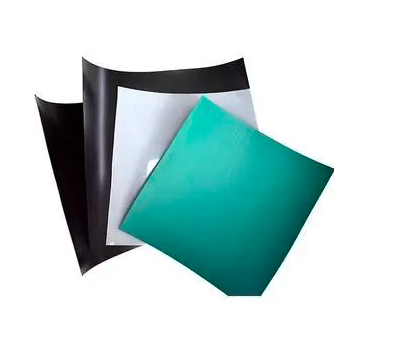- Understanding the Role of Geomembrane Liners in Waste Management
- Innovations in Geomembrane Liners for Water Management
- Geomembrane Liners: A Comprehensive Guide
- The Future of Geomembrane Liners in Civil Engineering
- Geomembrane Liners: Enhancing Landfill Stability
Manager:
WhatsApp:+86 177 0135 2670
Tel:+86 177 0135 2670
Email:marketing@okorder.com
Address:3rd Floor, No.2 Building, No.1 Sanlihe Road
The Resilience and Role of Permeable Geomembrane Systems
Permeable geomembranes in the complex world of civil engineering, where they have found many applications, are considered to be versatile solutions. In contrast, they serve as a dependable barrier for fluid and gas movement from landfills to dams preventing any leaks and ensuring that constructs remain intact. From various researches and experiences, this article presents different insights about how the role of permeable geosynthetic liners has evolved with time.

The Essence of Permeability
Permeable geomembranes are seemingly paradoxical terms denoting a particular variety of geosynthesises whereby some substances can pass through while others cannot. For example, they act as filters in landfill liners to protect infiltration of contaminants from reaching the surrounding soil or ground water supplies. It is not only about allowing substances through but also managing it accordingly.
Unraveling the Layers of Protection
One study has shown that after 12 years exposure HDPE (High-Density Polyethylene) geomembranes still performed well. There was just a small changes on their permeation properties over this period indicating that these membranes were very much resilient. This is why understanding their physical and mechanical attributes becomes essential since such materials usually act as barriers against environmental pollutants.
The Interplay of Sun and Synthesis
For instance radiation from the sun especially ultraviolet (UV) light poses great danger to durability of geomembranes. However, incorporation of additives like antioxidants or UV stabilizers mitigates this situation by reducing the rate at which damage occurs due to these rays. Researchers continue fighting against this degradation problem with newer ways being sought every day on how best weatherabity can be improved.
A Stitch in Time: The Role of Reinforcement
By incorporating textiles or other types geosynthetics into its composition, a liner’s compression strength increases greatly leading to increased tensile strength too. Additionally, reinforcement is vital in places where the surface is unevenly distributed or tends to move hence the need for a stable geomembrane.
The Fabric of Engineering: Geosynthetics and Their Kin
Permeable fabrics like Geotextiles and impermeable ones as seen with geomembranes are some of the categories under which geosynthetic materials fall. It is amazing how geosynthetics can be applied ranging from filtration and drainage to reinforcement and sealing. Often, it is this combination that offers most suitable answers within the field of geotechnical engineering.
The Canvas of Our Infrastructure: Applications in Hydropower
Generations after generations, renewable energy source relies on hydropower that has been improved by geomembrane technology inventions. The purpose of using these in dams, irrigation channels etc is more than just preventing water leakage but also enhances its hydraulic efficiency. A smooth surface like a geomembrane can make frictional losses decrease considerably hence improving power generation capability through hydroelectric stations.
When Things Go Wrong: The Dynamics of Failure
Although they are strong enough, some cases have been recorded whereby such geomembrane systems eventually became ineffective. Some examples include punctures caused by subsidence underneath these materials as well as wind lifting during their installation or local collapse. However, it should be remembered that any failures may serve as guidelines indicating the importance of correctly designed, installed and managed systems.
The Blend of Function and Form in The Aesthetic Symphony
In the modern era, even functional structures have to look good. The visual impact of geomembrane systems cannot be ignored, as such type of surfaces is normally expected in such an environment. Whether it is a glistening white surface reflecting the sun’s rays or a subtle texture that blends with nature, these systems are aimed at influencing public opinion by aesthetics over crime control.
The Future Flows: Innovations and Integration
Use of geomembranes therefore goes without saying however; their integration in existing hydropower infrastructure presents a different perspective- increasing service life and energy efficiency. With a view to reducing greenhouse gas emissions through optimized hydropower operations, the future may look very promising for further developing and implementing such systems.
Concluding Remarks
Permeable geomembranes are not just barriers but rather fosterers of safe, efficient and sustainable engineering practices. We have barely scratched the surface on those capabilities or realized how they could entirely transform our entire landscape or even build infrastructures that are much more amenable to human habitation based on these technologies. Permeable Geomembrane’s journey has been one of adaptation, resilience, and innovation – attesting to human ingenuity and our incessant pursuit for progress.
- Previous:THE PROTECTIVE EMBRACE OF GEOMEMBRANE FOR PONDS: A MODERN ENGINEERING MARVEL.
- Next:The Unfailing Tradition of PVC Geomembrane Liners






